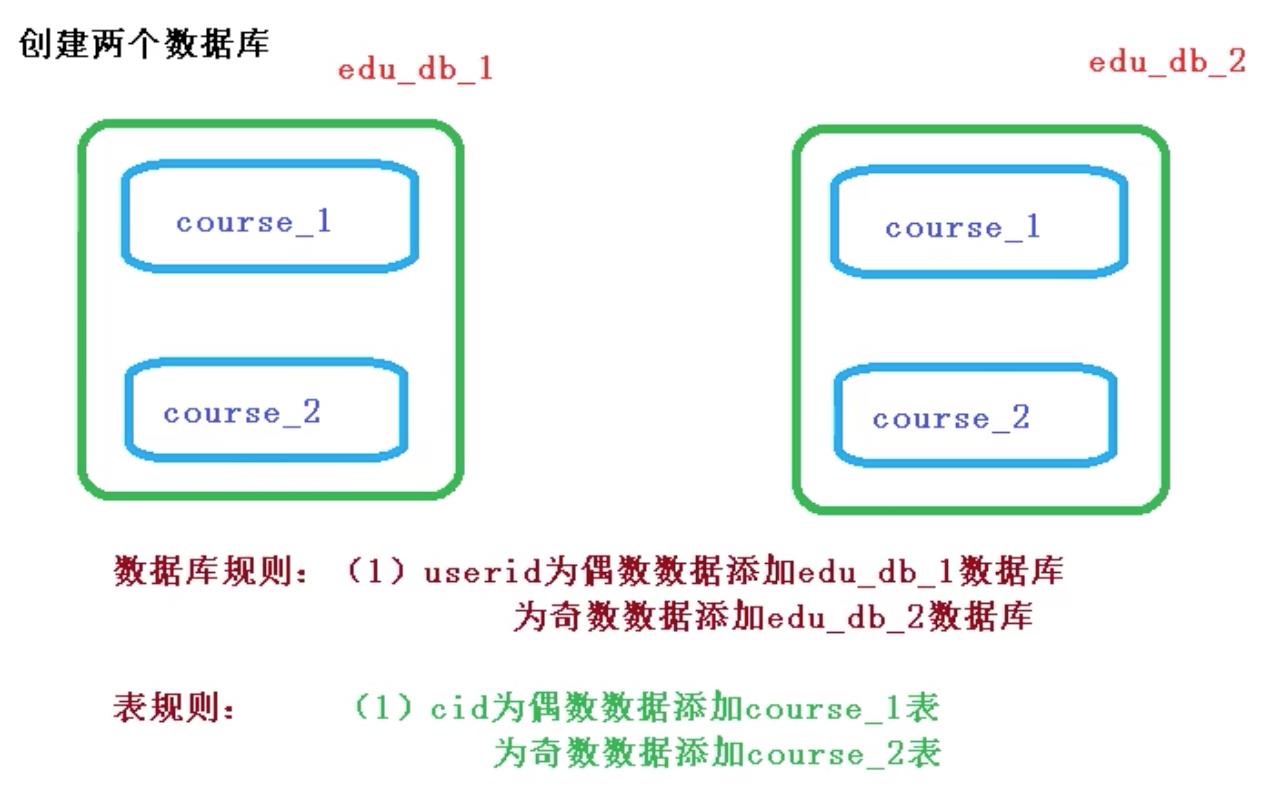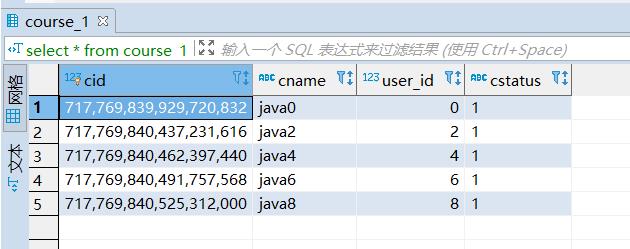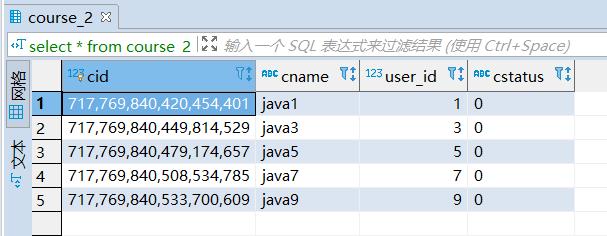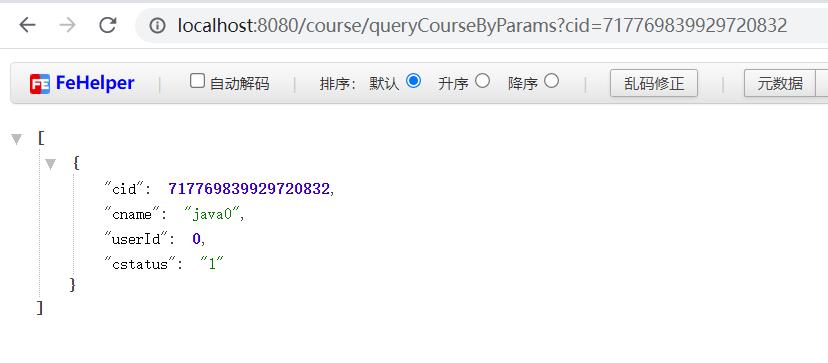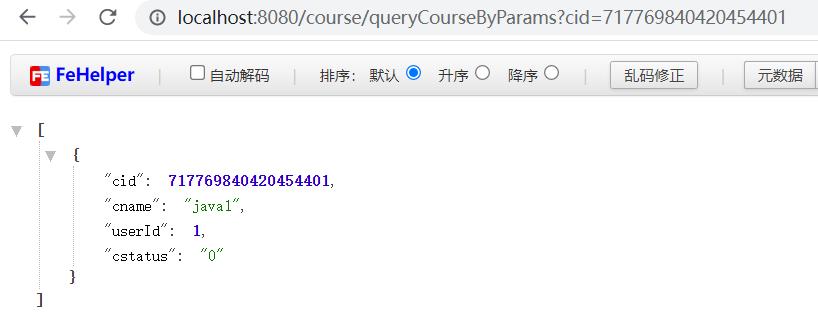Sharding-JDBC 实现水平分库以及分表
Posted 爱上口袋的天空
tags:
篇首语:本文由小常识网(cha138.com)小编为大家整理,主要介绍了Sharding-JDBC 实现水平分库以及分表相关的知识,希望对你有一定的参考价值。
一、需求分析
二、创建数据库,数据表
create database edu_db_1; create database edu_db_2; use edu_db_1; create table course_1 ( `cid` bigint(20) primary key, `cname` varchar(50) not null, `user_id` bigint(20) not null, `cstatus` varchar(10) not null ); create table course_2 ( `cid` bigint(20) primary key, `cname` varchar(50) not null, `user_id` bigint(20) not null, `cstatus` varchar(10) not null ); use edu_db_2; create table course_1 ( `cid` bigint(20) primary key, `cname` varchar(50) not null, `user_id` bigint(20) not null, `cstatus` varchar(10) not null ); create table course_2 ( `cid` bigint(20) primary key, `cname` varchar(50) not null, `user_id` bigint(20) not null, `cstatus` varchar(10) not null );
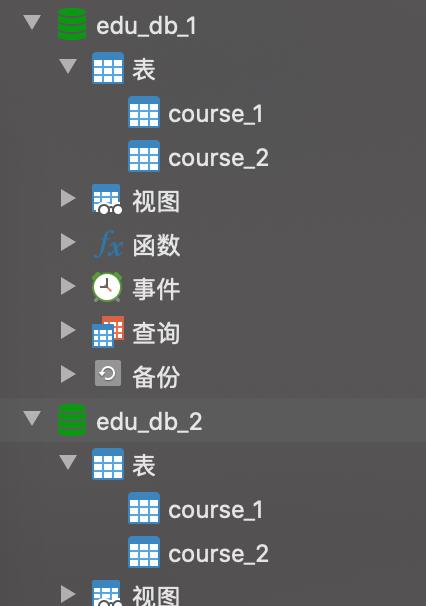
三、配置水平分库分表策略
spring: shardingsphere: # 数据源配置 datasource: # 数据源名称,多数据源以逗号分隔,名称可以随意起名 names: db1,db2 db1: #配置第一个数据源 driver-class-name: com.mysql.cj.jdbc.Driver type: com.alibaba.druid.pool.DruidDataSource password: xxxxxx username: root url: jdbc:mysql://192.168.56.20:3306/edu_db_1?allowPublicKeyRetrieval=true&useUnicode=true&characterEncoding=utf-8&useSSL=false&serverTimezone=Asia/Shanghai db2: #配置第一个数据源 driver-class-name: com.mysql.cj.jdbc.Driver type: com.alibaba.druid.pool.DruidDataSource password: xxxxxx username: root url: jdbc:mysql://192.168.56.20:3306/edu_db_2?allowPublicKeyRetrieval=true&useUnicode=true&characterEncoding=utf-8&useSSL=false&serverTimezone=Asia/Shanghai # 规则配置 rules: sharding: # 分片算法配置 sharding-algorithms: course-table-inline: # 分表的策略 type: INLINE # 分片算法类型 props: # 分片算法的行表达式 algorithm-expression: course_$->cid % 2 + 1 course-database-inline: # 分库的策略 type: INLINE props: algorithm-expression: db$->user_id % 2 + 1 # 分布式序列算法配置 key-generators: course-snowflake: type: snowflake #分布式序列算法类型,雪花算法:SNOWFLAKE; UUID:UUID) column: cid #分布式主键列 tables: # 逻辑表名称 course: # 行表达式标识符可以使用 $... 或 $->...,但前者与 Spring 本身的属性文件占位符冲突,因此在 Spring 环境中使用行表达式标识符建议使用 $->... actual-data-nodes: db$->1..2.course_$->1..2 # 分表策略 table-strategy: standard: # 分片列名称 sharding-column: cid # 分片算法名称 sharding-algorithm-name: course-table-inline key-generate-strategy: column: cid #分布式序列列名称 key-generator-name: course-snowflake #分布式序列算法名称 database-strategy: # 定义分库策略 standard: sharding-column: user_id sharding-algorithm-name: course-database-inline # 属性配置 props: # 展示修改以后的sql语句 sql-show: true
四、编写测试代码
package com.sharding.demo.web; import com.baomidou.mybatisplus.core.conditions.query.QueryWrapper; import com.sharding.demo.model.Course; import com.sharding.demo.service.CourseService; import org.apache.commons.lang.StringUtils; import org.springframework.web.bind.annotation.RequestMapping; import org.springframework.web.bind.annotation.RestController; import javax.annotation.Resource; import java.util.List; @RestController @RequestMapping(value = "course") public class CourseController @Resource private CourseService courseService; @RequestMapping(value = "addCourse") public void addCourse() for (int i = 0; i < 10; i++) Course course = new Course(); // course.setCid(100L+i); //cid由我们设置的策略,雪花算法进行生成(至少70年内生成的id不会重复) course.setCname("java"+i); course.setUserId(Long.valueOf(i)); course.setCstatus(i%2==0?String.valueOf(1):String.valueOf(0)); courseService.addCourse(course); @RequestMapping(value = "updateCourseByParam") public String updateCourseByParam(Course course) return courseService.updateCourseByParam(course); @RequestMapping(value = "delCourseByParam") public String delCourseByParam(Course course) return courseService.delCourseByParam(course); @RequestMapping(value = "queryCourseByParams") public List<Course> queryCourseByParams(Course course) QueryWrapper<Course> wrapper = new QueryWrapper<>(); if (StringUtils.isNotBlank(course.getCname())) wrapper.eq("cname", course.getCname()); if (StringUtils.isNotBlank(course.getCstatus())) wrapper.eq("cstatus", course.getCstatus()); if (null!=course.getCid()) wrapper.eq("cid", course.getCid()); if (null!=course.getUserId()) wrapper.eq("user_id", course.getUserId()); return courseService.findCourse(wrapper);执行新增:
查看结果:
edu_db_1库:
course_1:
course_2:
edu_db_2库:
course_1:

course_2:
执行查询方法:
查询在edu_db_1库的数据:
查询在edu_db_2库的数据:
以上是关于Sharding-JDBC 实现水平分库以及分表的主要内容,如果未能解决你的问题,请参考以下文章
